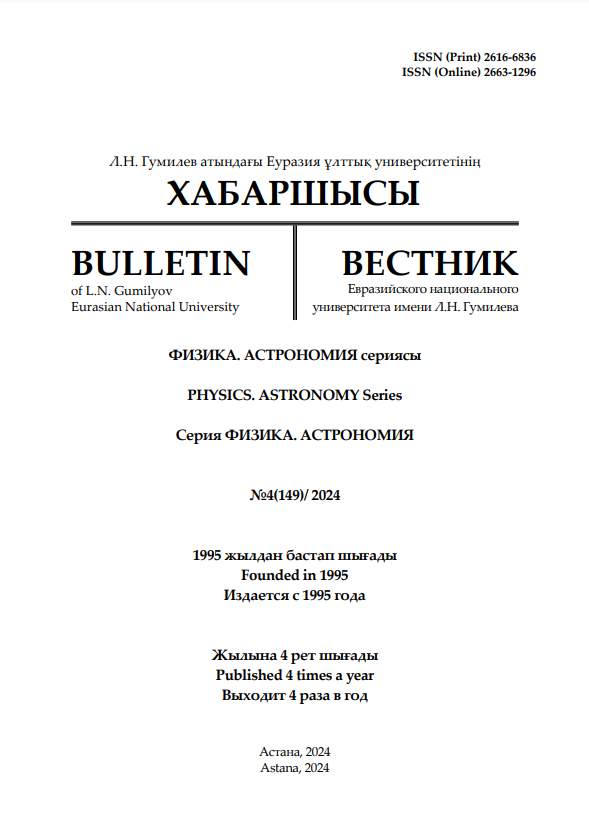Study of resonance reactions at the DC-60 cyclotron using the TTIK and time-of-flight techniques
Views: 162 / PDF downloads: 111
DOI:
https://doi.org/10.32523/2616-6836-2024-149-4-128-141Keywords:
resonances, thick target, inverse kinematics, time of flight, cyclotron, cluster statesAbstract
The article is devoted to the review of the work done on the first successful implementation of the thick target method in inverse kinematics (TTIK) based on the DC-60 cyclotron. The use of the TTIK technique together with the time-of-flight system for heavy ion beam diagnostics and reaction product identification made it possible to study resonance nuclear reactions in the region of low interaction energies, which are also of astrophysical interest. The technique is based on measuring the excitation functions of light particle scattering under inverse kinematics conditions, where a thick and extended gas target (helium or hydrogen) is used as a target, and heavy accelerated nuclei serve as a beam. In addition, it provides a detailed description of the implemented experimental scheme and the data acquisition and processing systems. As a result, the overall experimental resolution of about 35 keV and 2 ns at an angle of 180° in the center of mass system (cms) was achieved. Moreover, the use of the TTIK method allowed us to eliminate background reactions by using ultra-pure light gases helium and hydrogen as a target and heavy particle isotope beams. All this together allowed our group to successfully conduct a series of experiments to study the resonance structure of 20Ne, 21Ne, 19F, 22Ne nuclei in the reactions 16O+α, 17O+α, 15N+α and 22Ne+α, respectively.










